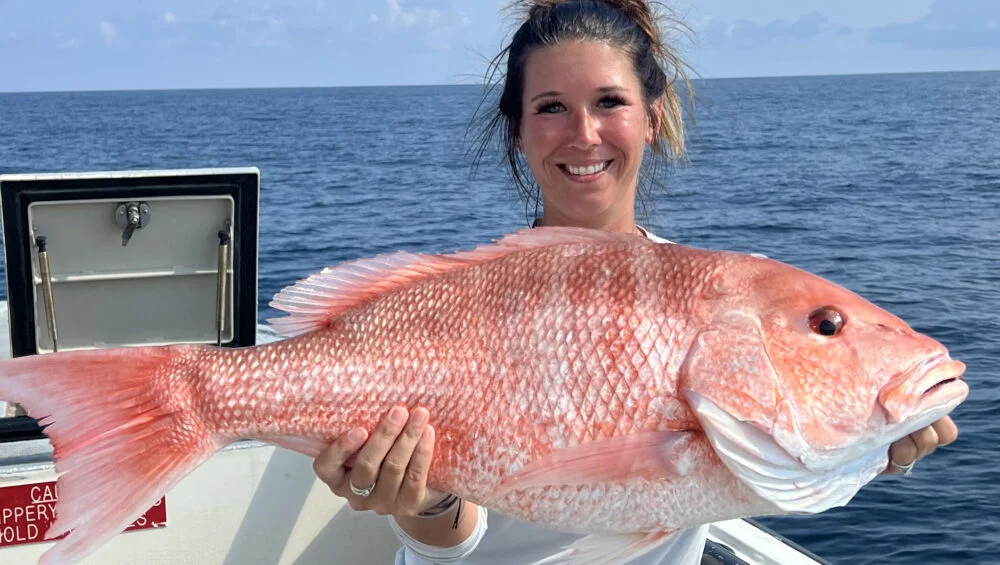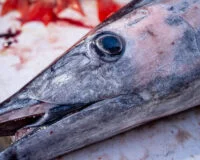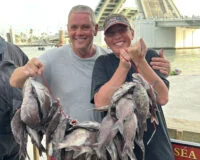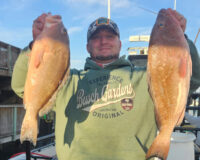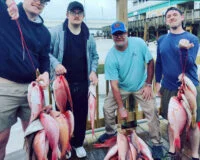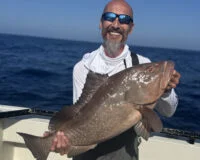Inshore Fishing Report
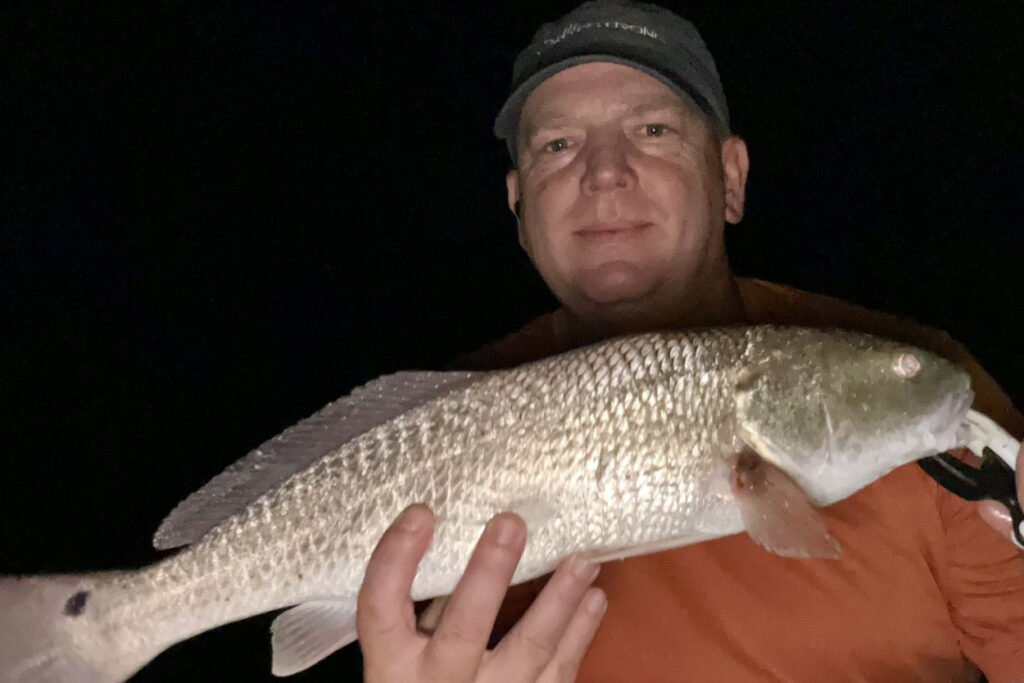
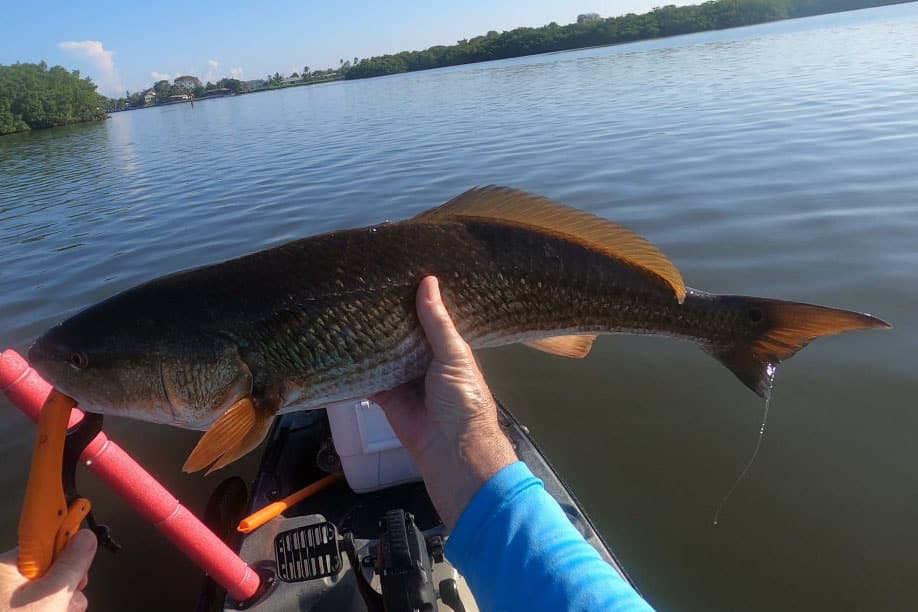
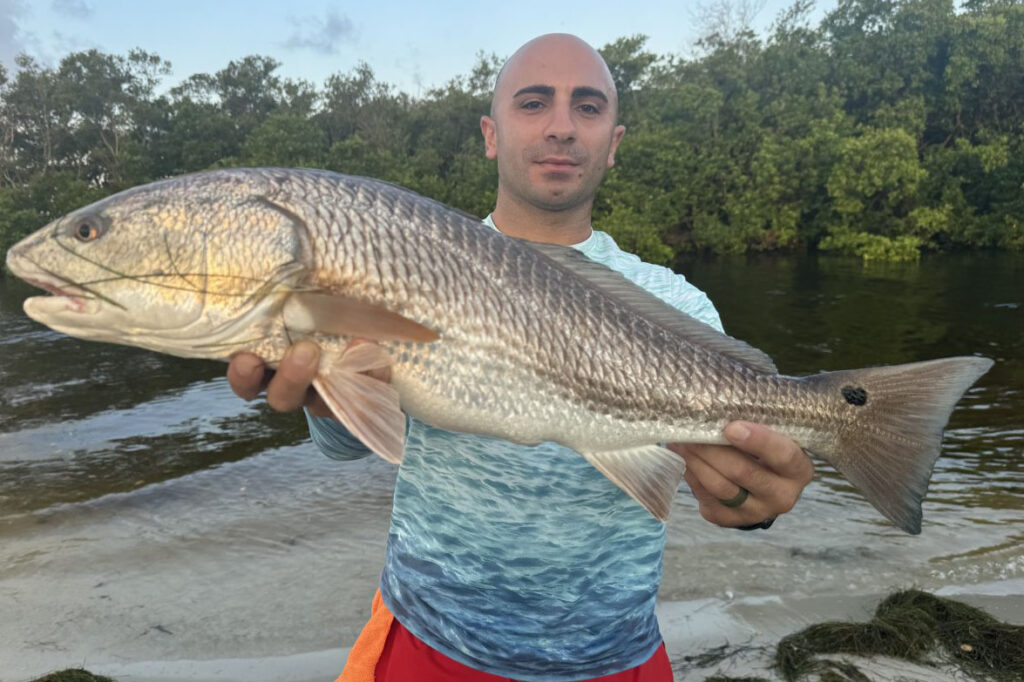
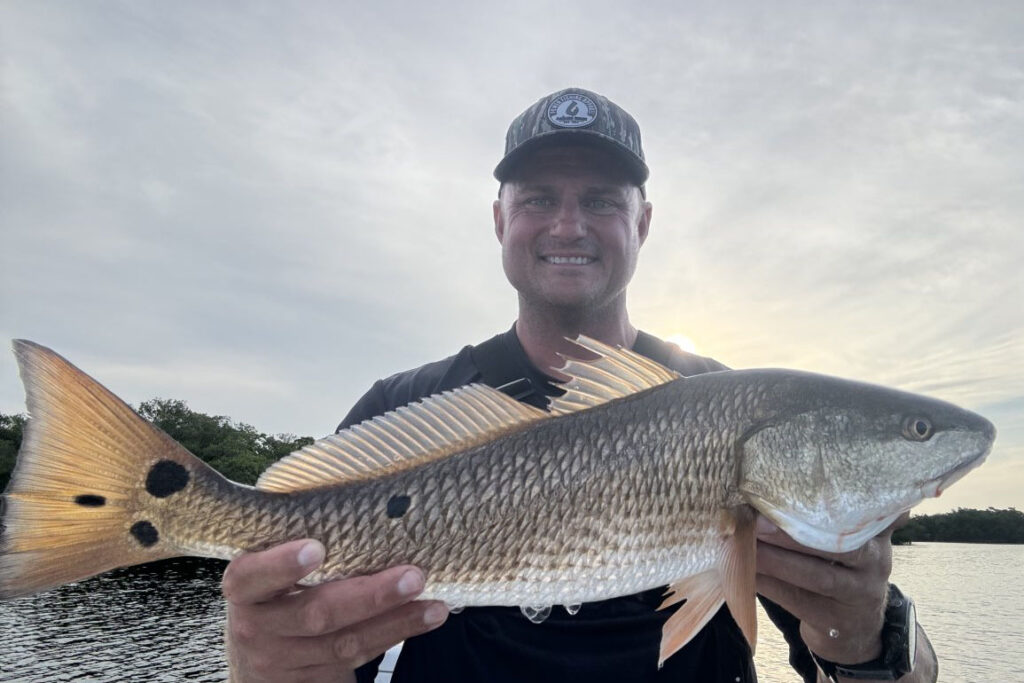
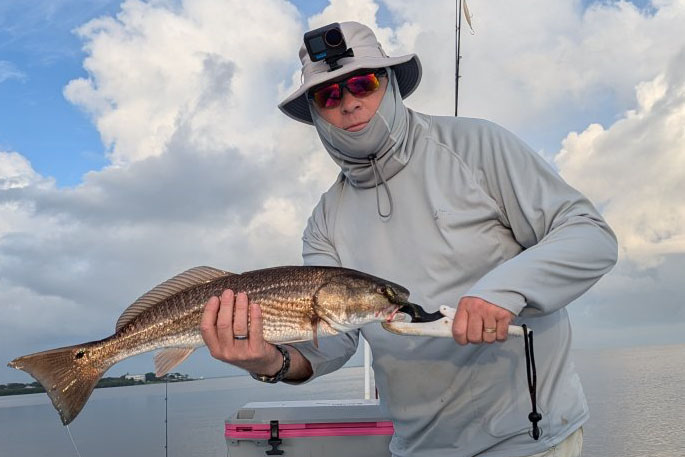
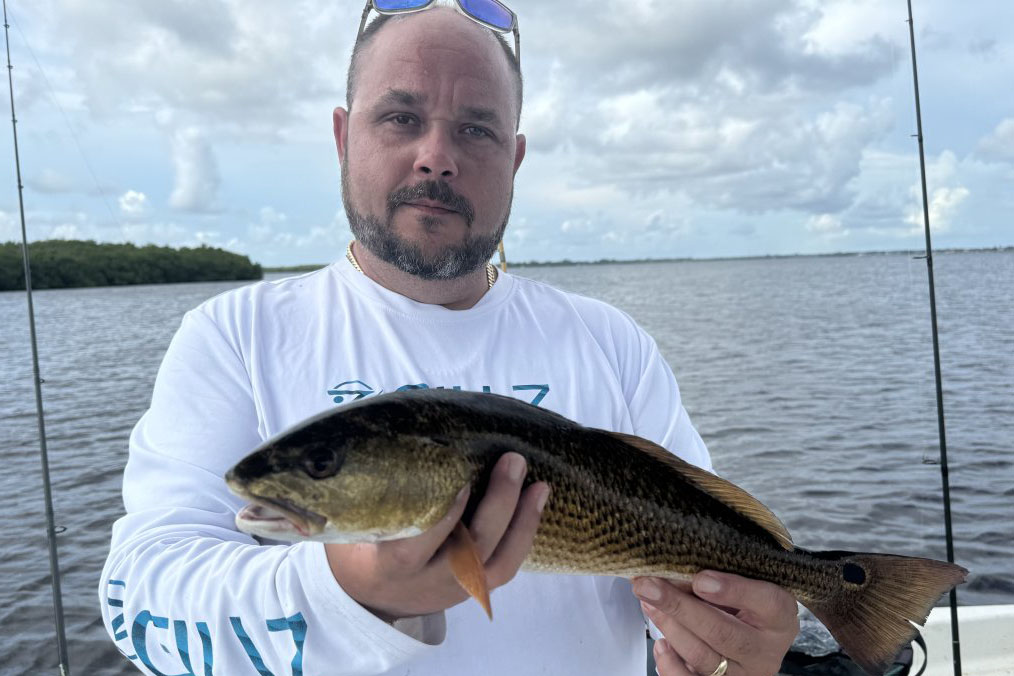
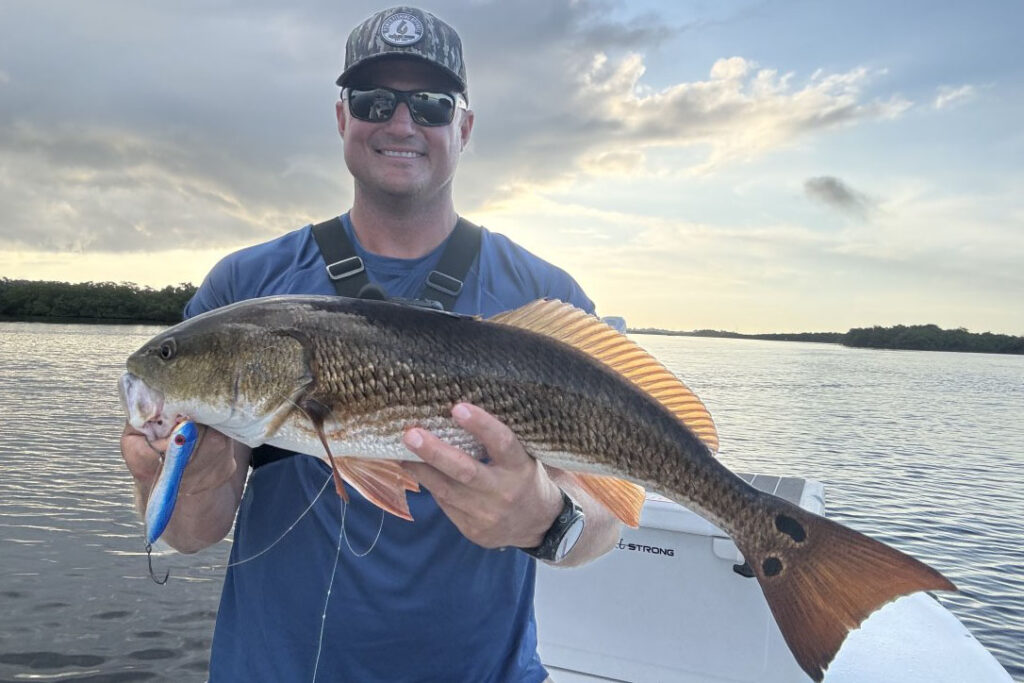
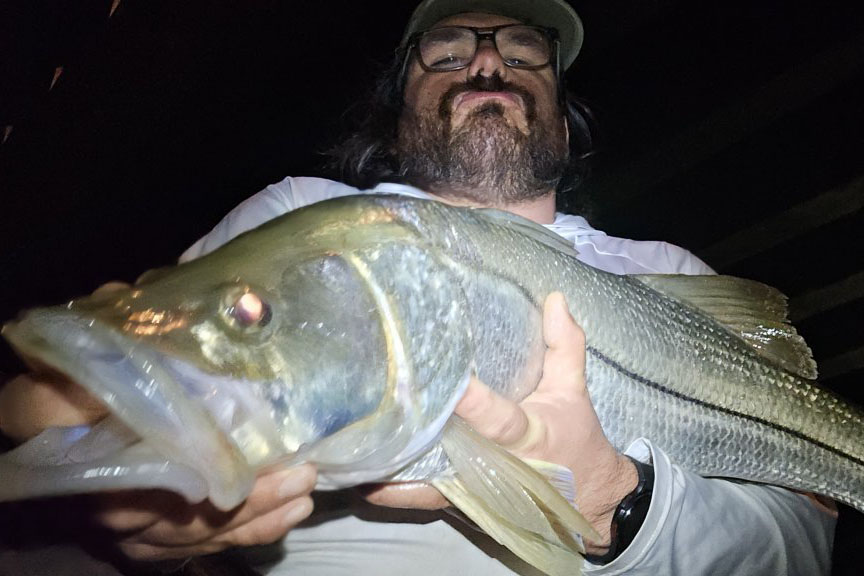
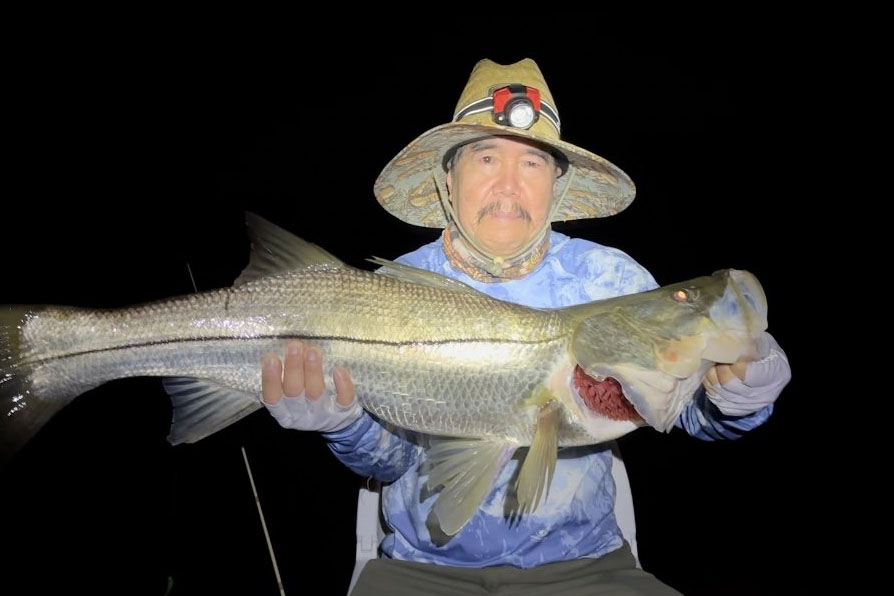
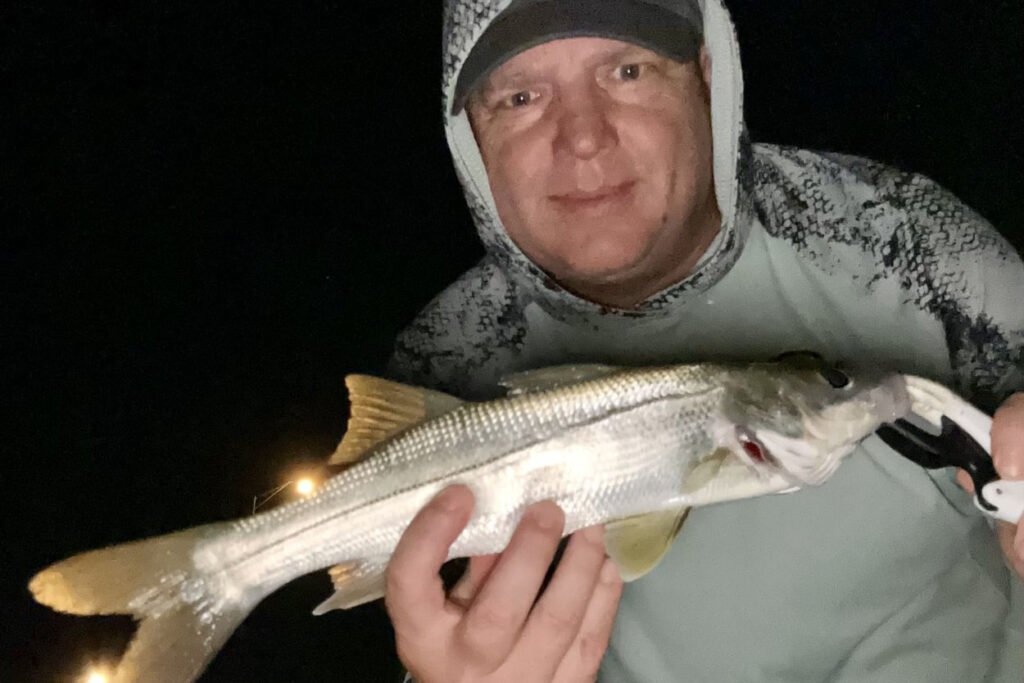
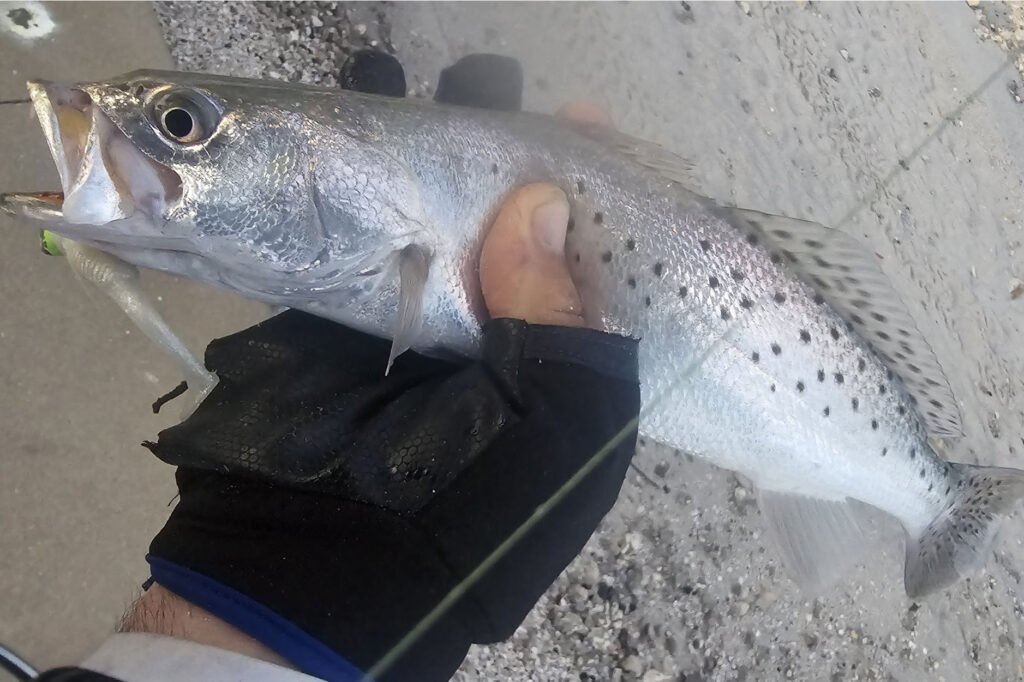
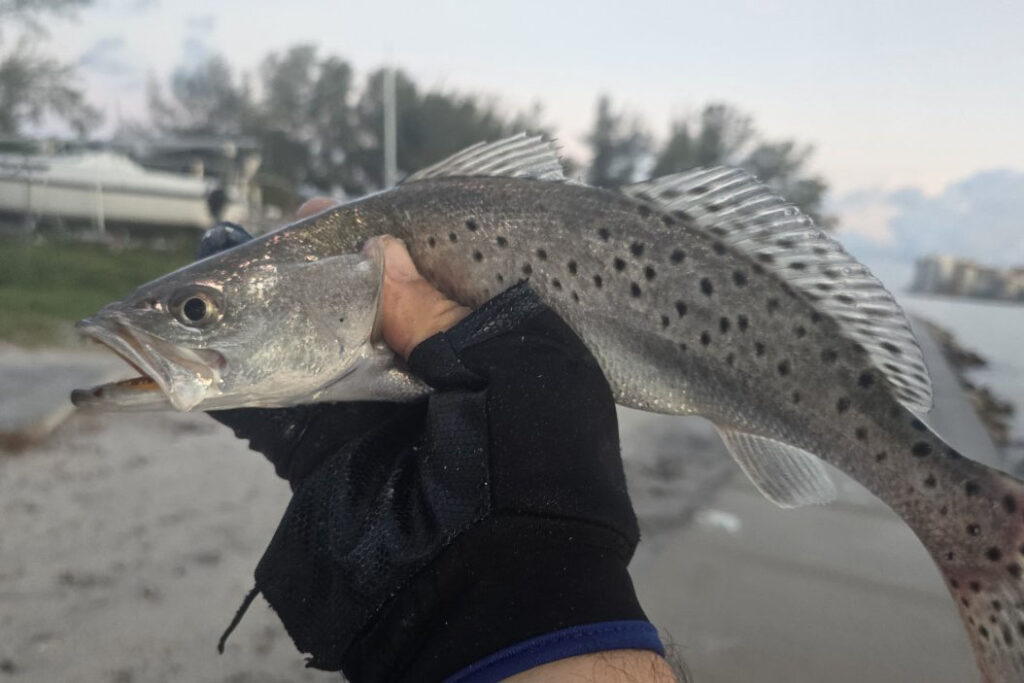
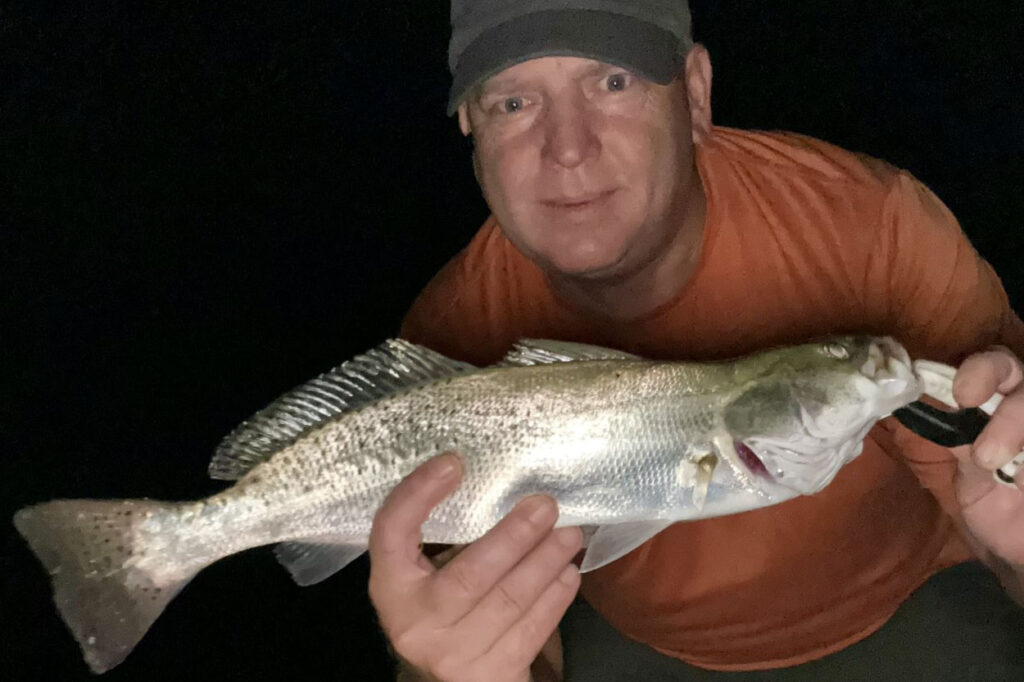
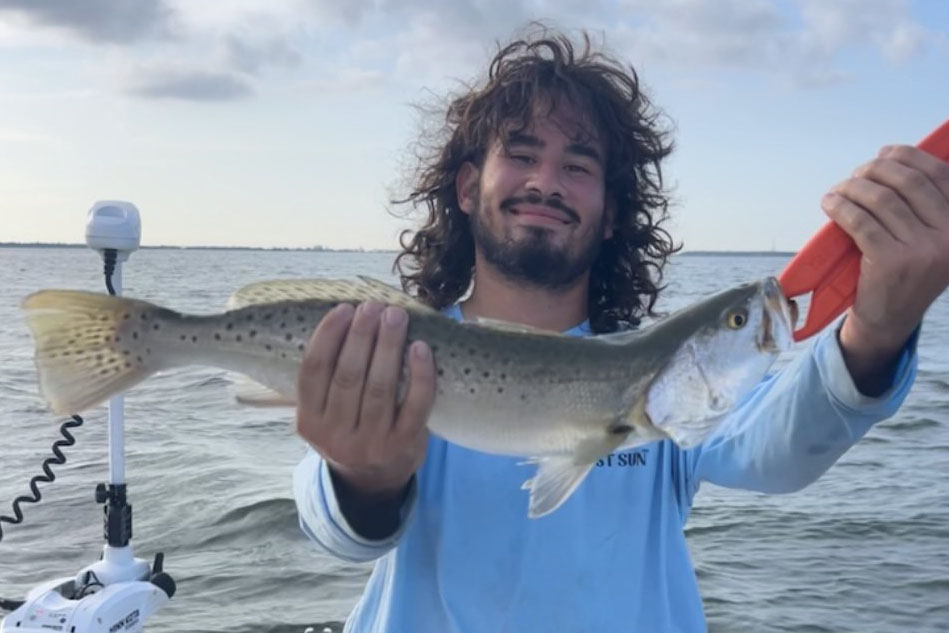
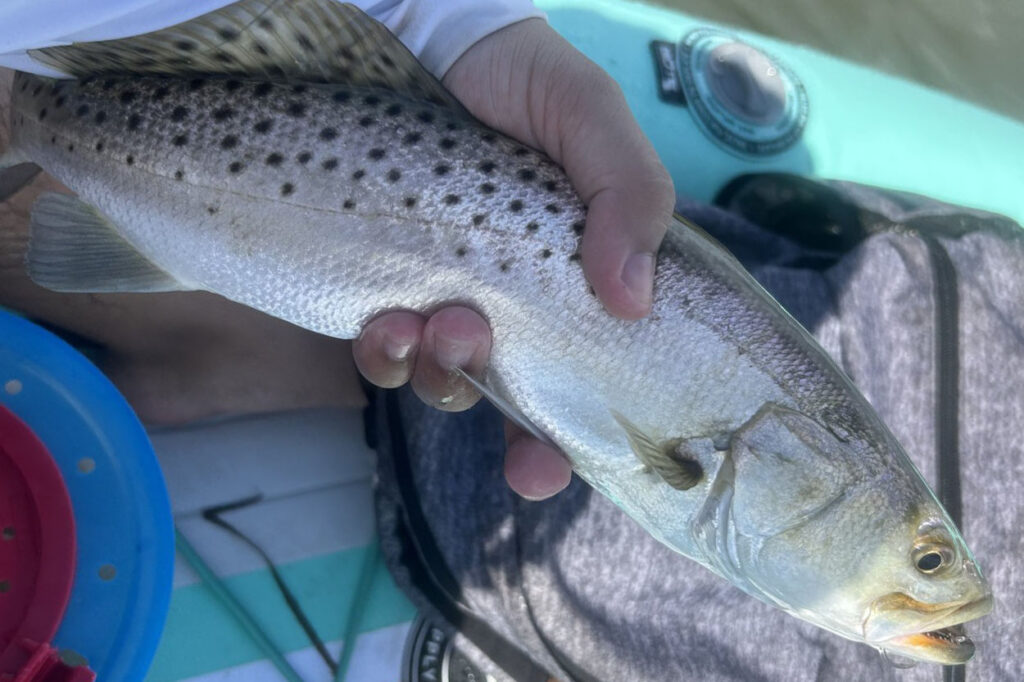
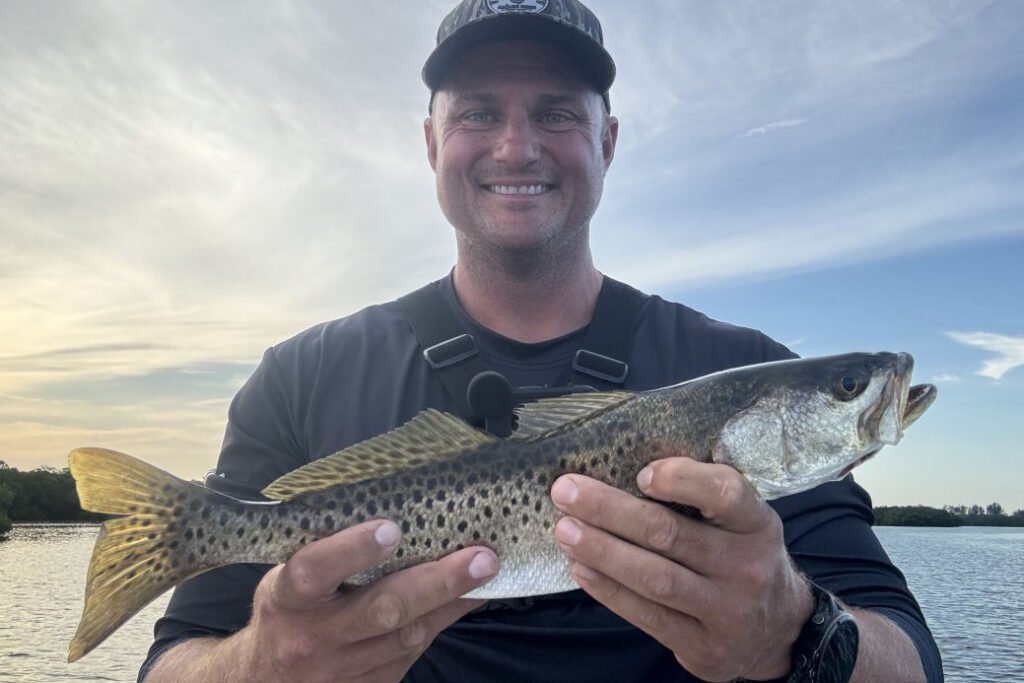
Redfish action has been thick around the back bay waters later, mostly cut baits have been hot with cut threadfins, pinfish, ladyfish and mullet. Finding most around the islands, mangroves, dock lines and oyster bars. During the day, look for the mullet and birds. Definitely shoot for earlier in the day before water gets crazy hot, or later day once it cools off.
Snook action is going well around the dock & bridge lights at night. Behind hurricane debby water got murky and stirred up with lots of fresh water, but as things normalize now the fishing is getting much better. We are seeing the bite improve as things get back to more typical patterns. During the day we are finding a few snook around the docks, but mostly out on the beaches early morning around the pass. Back bay waters have had active snook on the flats prior to the heat of the day.
Trout are deeper, mostly on the edges, potholes, or deeper flats. Targeting around 6-10ft of water is a good idea if you are wanting to get into the trout action well. We are seeing them more slower and lethargic due to water temps.
Black drum are active around the big bridges, docks, and structures of the region. Big dead baits soaking on the bottom like cut crabs or big shrimp are a great idea for the big black drum. Many will cruise the bridges with the side scan looking for the concentrations of drum.
Tarpon are still pretty prolific around the area. Especially around bigger bay area bridges, like the skyway. They are moving along the beaches too, and much less pressure on them are making them more cooperative.
Mangrove snapper are super active in the back bay waters right now around the structures, super prolific, aggressive and ready to eat smaller pieces of cut bait or small live shrimp or white bait chunks. Targeting them at the end of a tide before the start of the next one is a good idea to allow you to use lighter weights and a more natural presentation. When the tide is smoking they will tuck up into the structure and the bite won’t be as active.
Fishing Tips
- Snook: Use live baits like greenbacks, threadfins, and shrimp, or try flair hawks and soft plastics at night.
- Redfish: Look for them around mangroves, oyster bars, and flats, and use dead baits during higher tides.
- Trout: Target them with soft plastics, white bait, and shrimp around deeper flats and potholes.
- Tarpon: Target them during the full moon with crab flushes, making it an ideal time to target them.
- Flounder: Find them near sandy bottoms and structures, biting on bottom baits.
- Pompano: Be prepared to move frequently to stay on their bite.
- Sharks: Use big dead baits in areas with moving water.
NEarshore Fishing Report
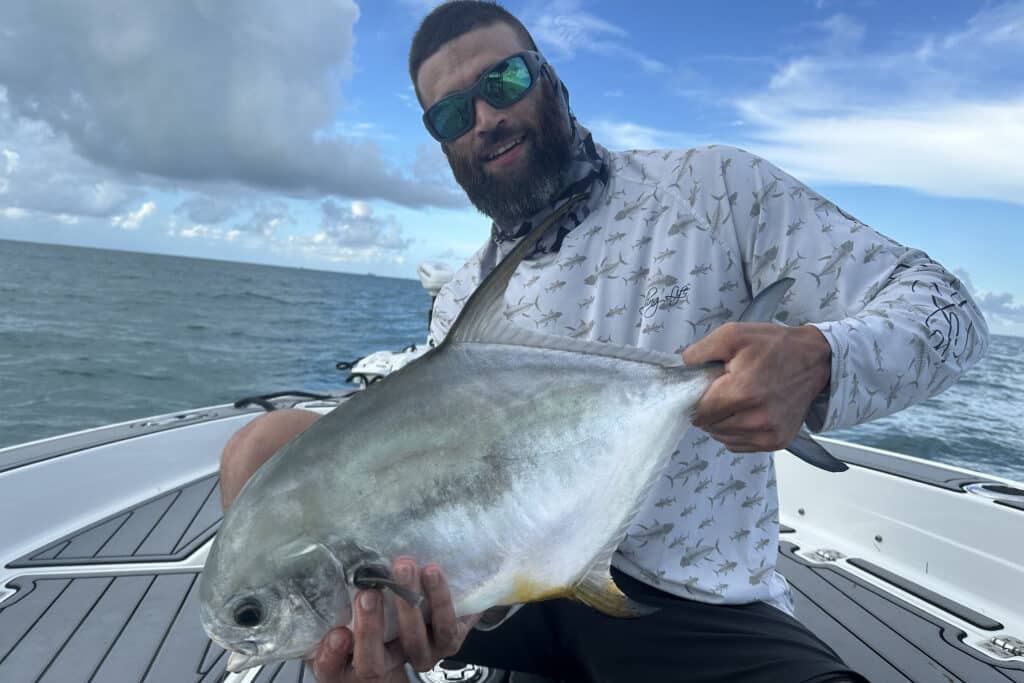
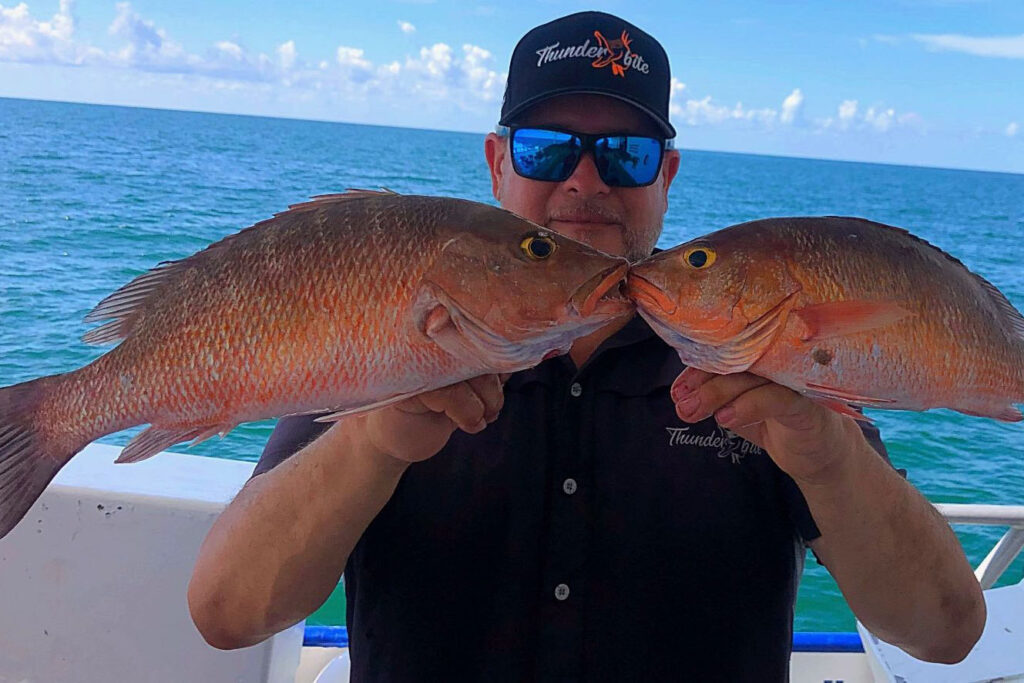
Lane snapper are biting well for us near shore on our ten hour all day fishing trips when we are able to get to the deeper near shore waters. They are really likely to eat just about anything, but the bigger ones are caught using live shrimp or chunks of cut threadfin. However, squid chunks will get you plentiful action and its much easier to use as its super forgiving.
Mangrove snapper action near shore is spotty, but were catching some nice ones. The biggest mangroves are always on smaller pinfish, but we see them loving live shrimp and cut threadfin chunks. They typically are leader shy and smart and can be picky. They will not bite the squid like the lane snapper most of the time.
Plentiful heads and tails near shore too, but the hogfish bite is slower in the warmer months. We are getting a few hogfish here and there, but we don’t target them heavily until the water cools down and they concentrate more for us around the cold fronts in the fall, winter, and early spring.
We are seeing some mahi mahi occasionally near shore while bottom fishing. Most of the time this is just random so you need to be ready with a pitch rod. We typically get them using the gotcha plugs. But you can also use cut bait to target them too if you see the school swim up.
Help spread the word about what to do if you hook or entangle a bird. Never cut the line; instead, reel in the bird carefully to dehook and release it. If you accidentally hook a dock, break the line at the hook to avoid leaving any line in the water. Seabirds with fishing lines hanging from them are becoming more common, and this could lead to the closure of fishing areas.
Rising concerns about bird entanglements might result in closing fishing spots, impacting the few available locations around Tampa Bay from shorelines, docks, bridges, or piers. Learn more in our recent podcast with Salt Strong: https://www.saltstrong.com/articles/shutting-down-fishing-at-busy-pier/.
Fishing Tips
- Red Grouper: Target the deepest near shore waters with big dead baits or solid live baits. Use 60 lb test and 7/0 hooks for best results.
- Red Snapper: Use big dead baits like whole squid and bonita strips with heavy tackle to focus on larger fish. Prime trips include the 12-hour extreme, 39-hour, and 44-hour trips.
- Scamp Grouper: Use small to medium pinfish and cut threadfin, especially while targeting mangrove snapper.
- Mangrove Snapper: Near shore, use live shrimp and small chunks of threadfin on 30-40 lb test with 3-4/0 hooks. Offshore, use bigger chunks of cut threadfin or medium pinfish on 40-60 lb test with 5-7/0 hooks.
- Vermillion Snapper: Start around 100 feet of water using cut squid or threadfin. These fish are aggressive and not leader-shy.
- Yellowtail Snapper: Use shrimp, cut squid, and threadfin.
- Pelagic Species: Keep flat lines and pitch rods ready for sailfish, kingfish, wahoo, tuna, and mahi mahi.
Offshore Fishing Report
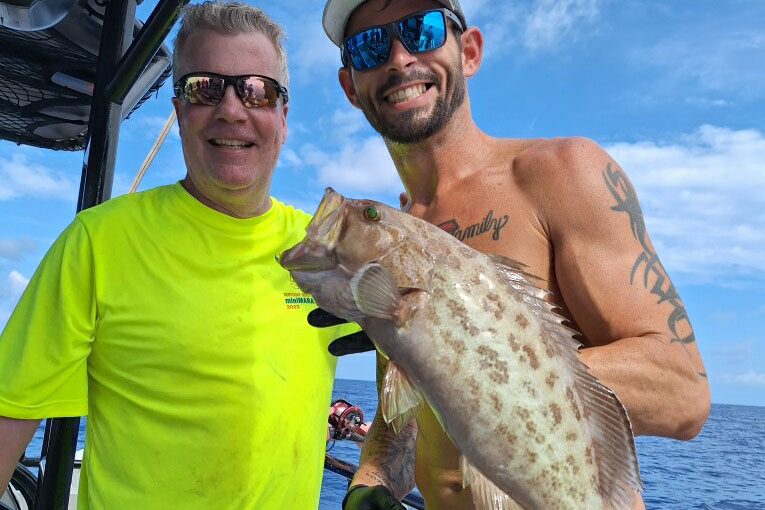
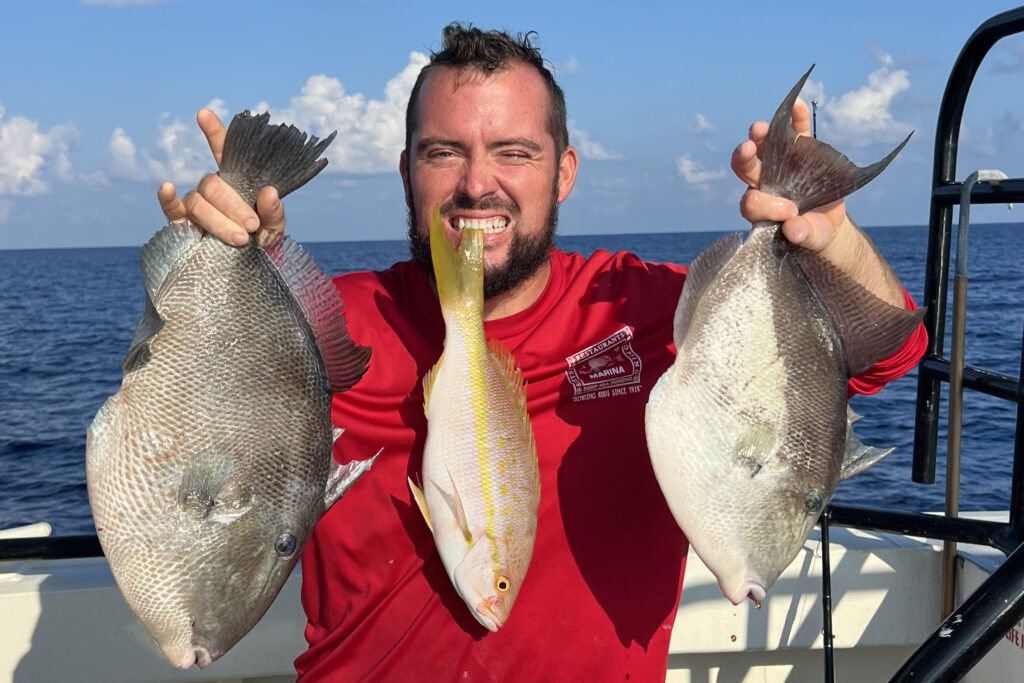
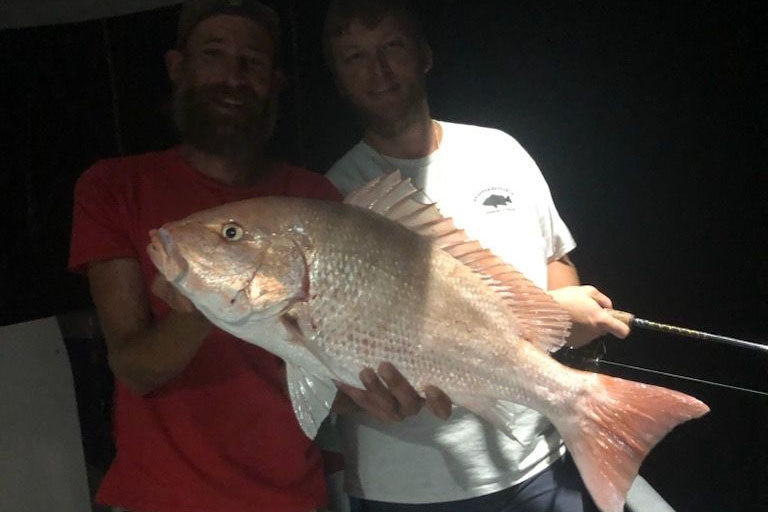
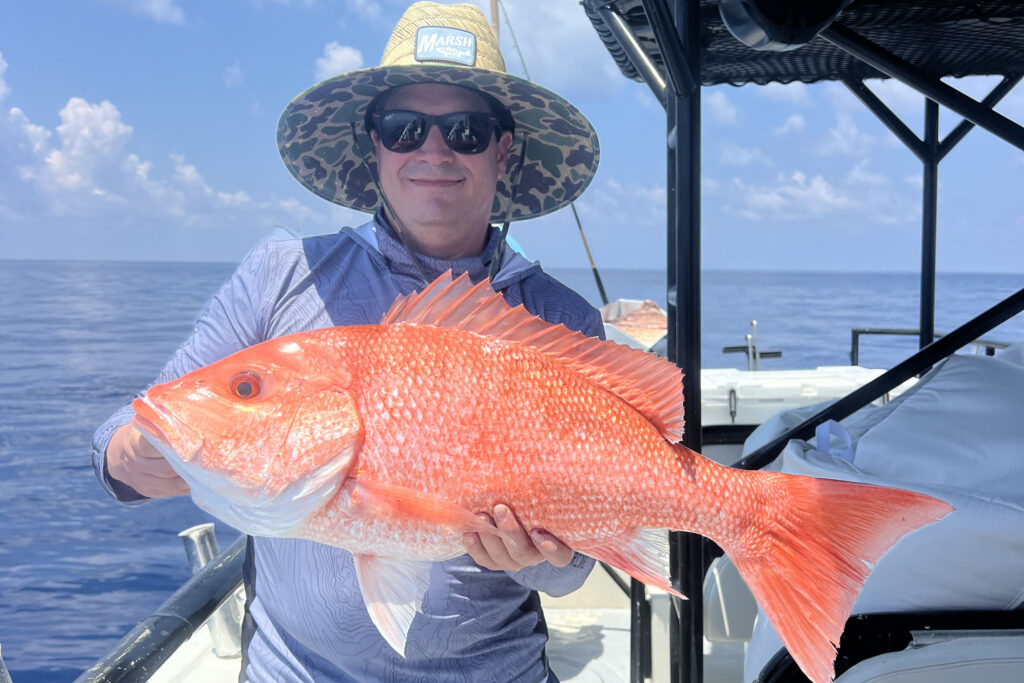
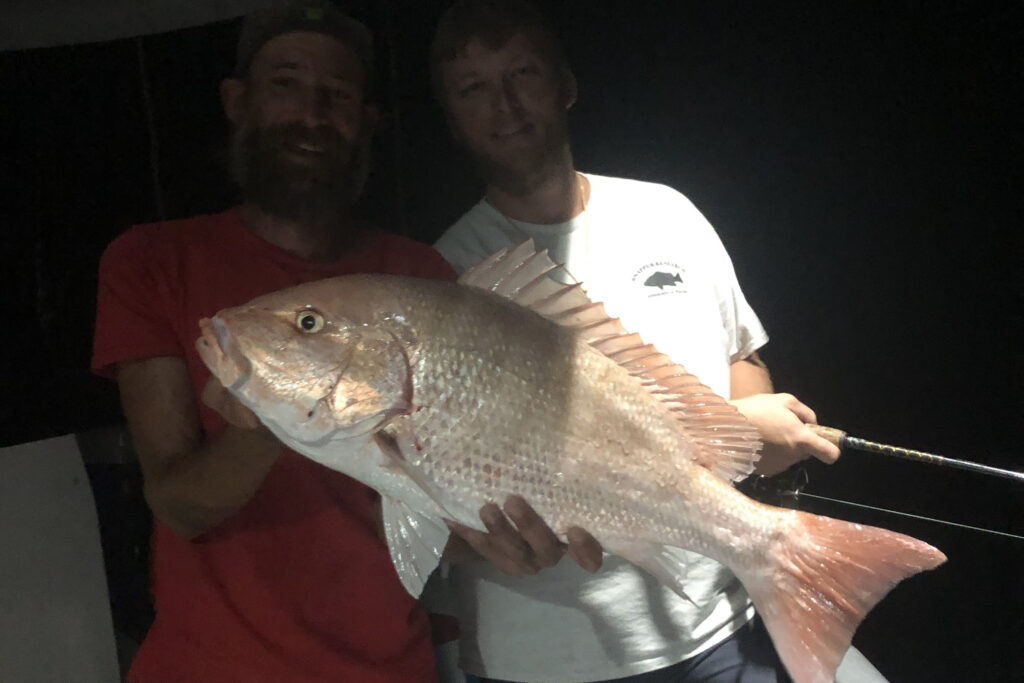
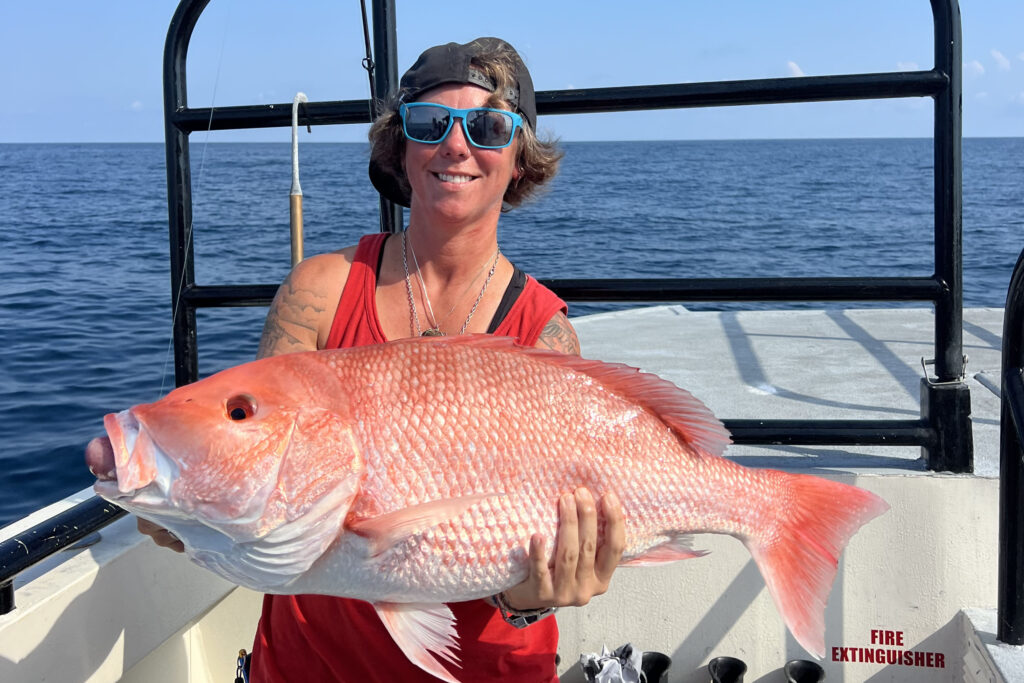
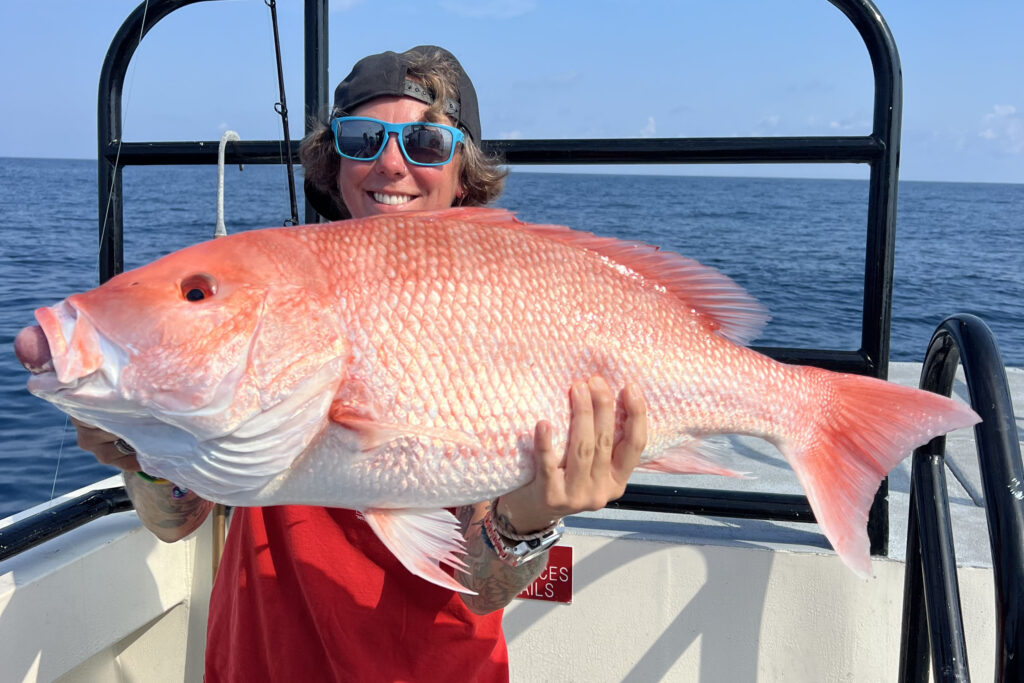
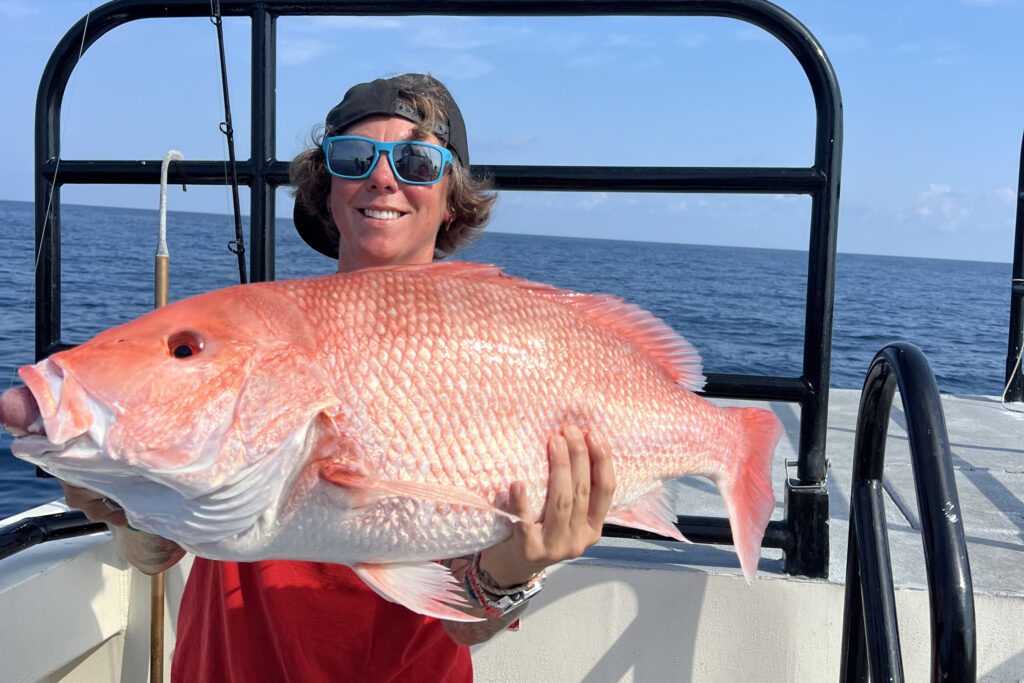
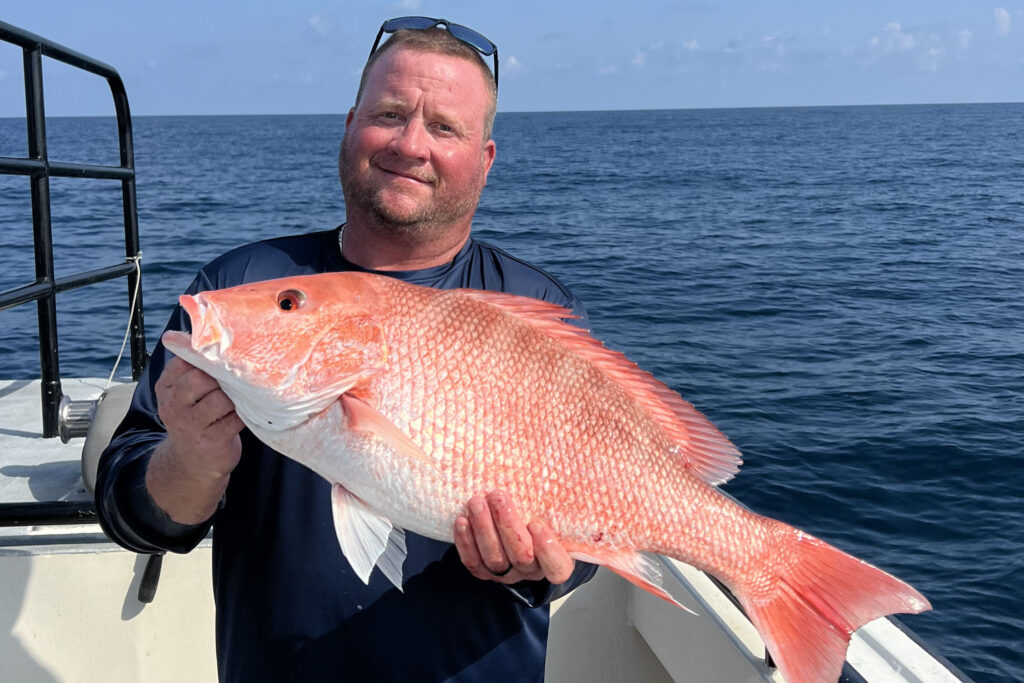
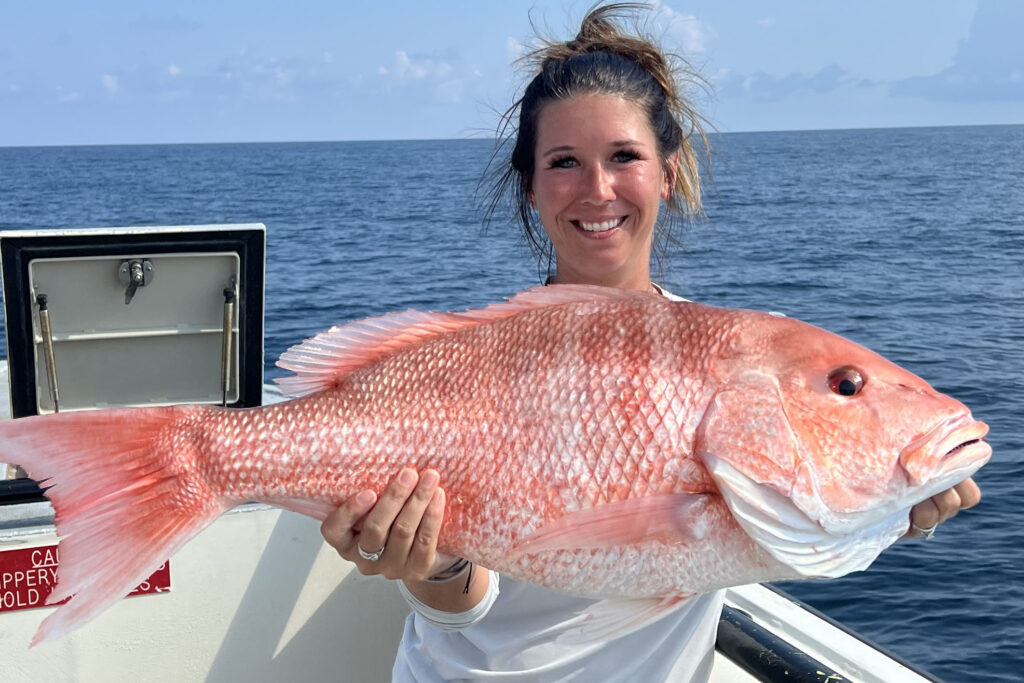
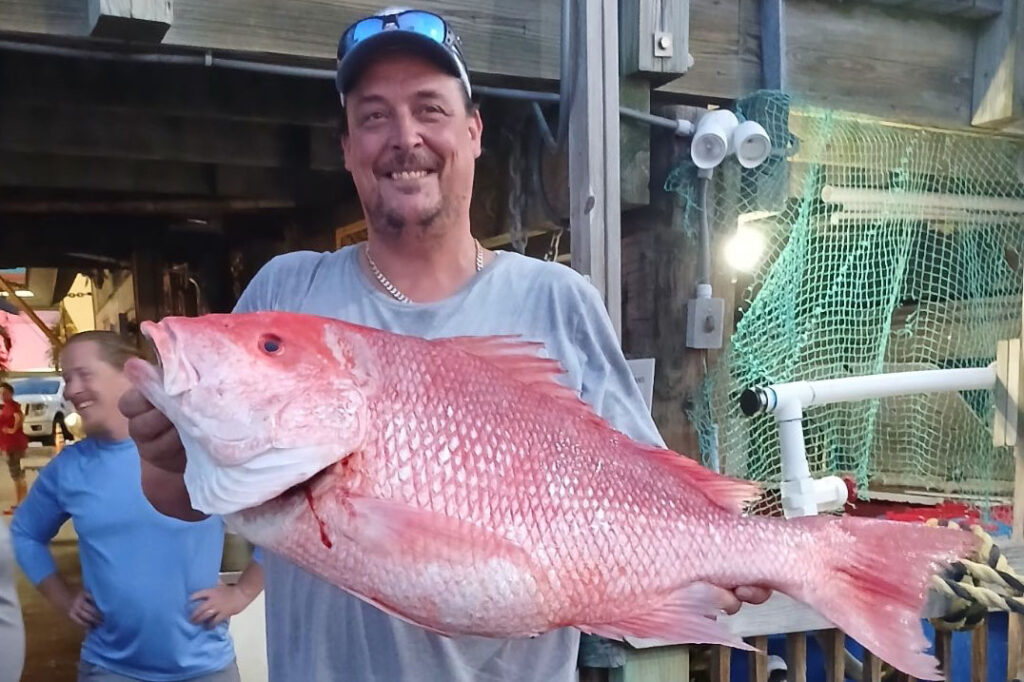
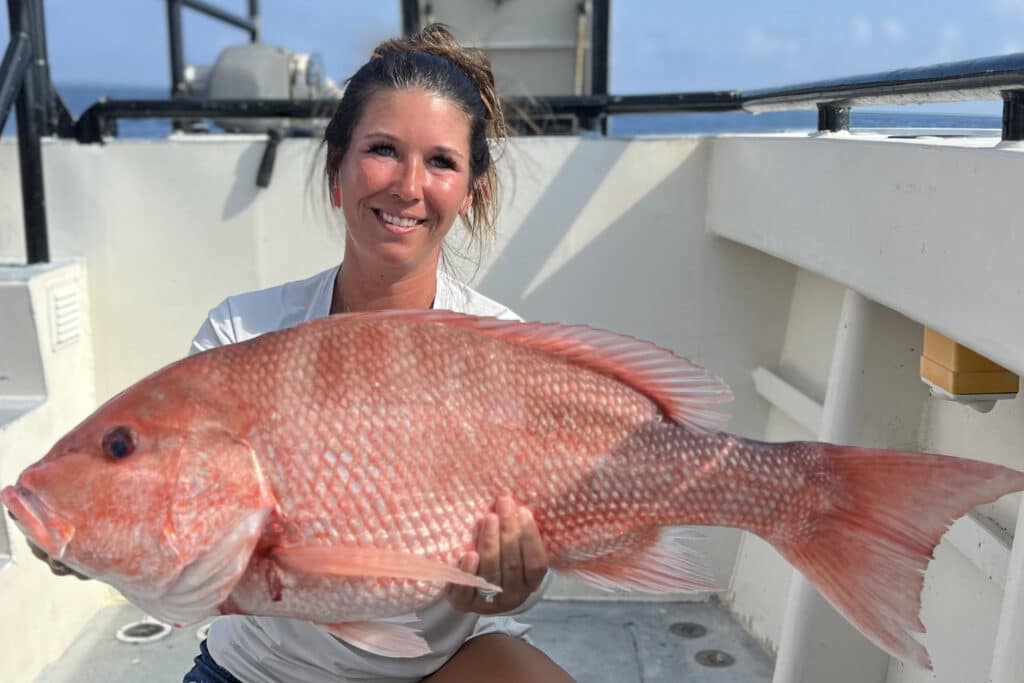
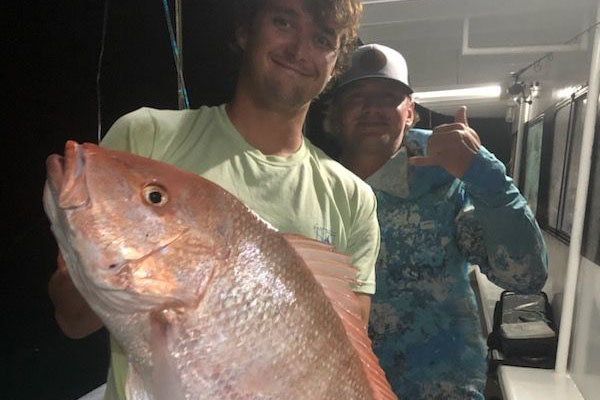
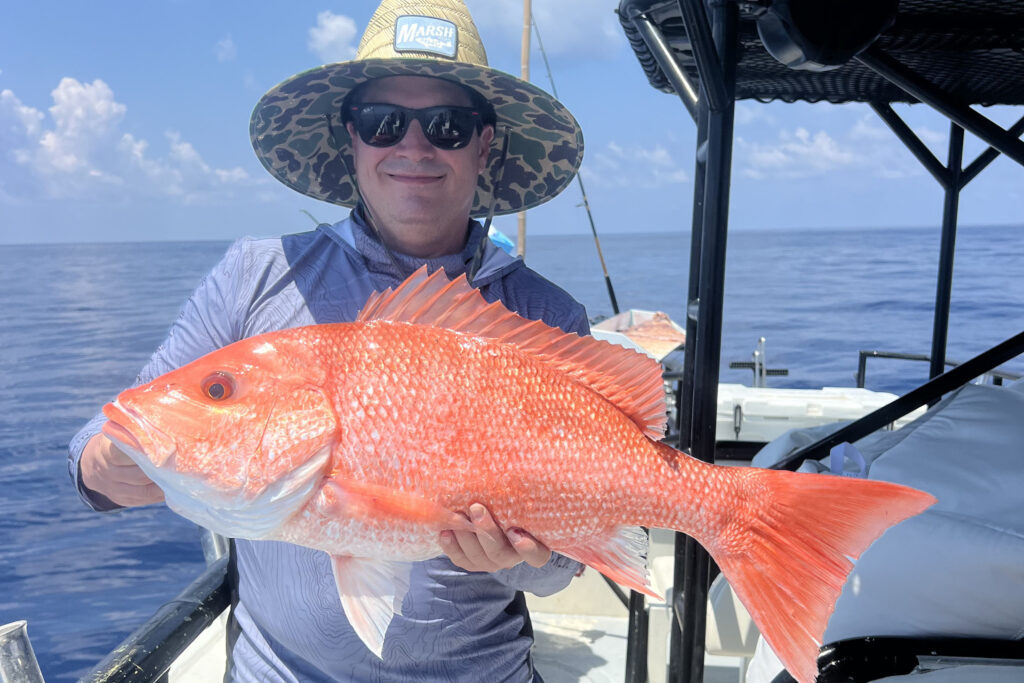
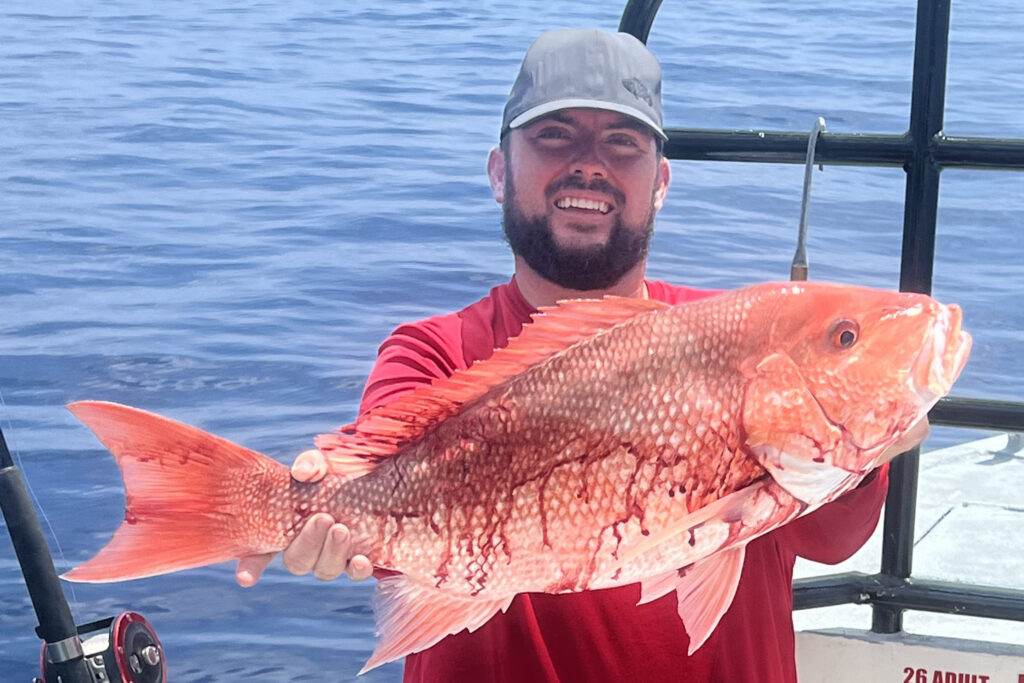
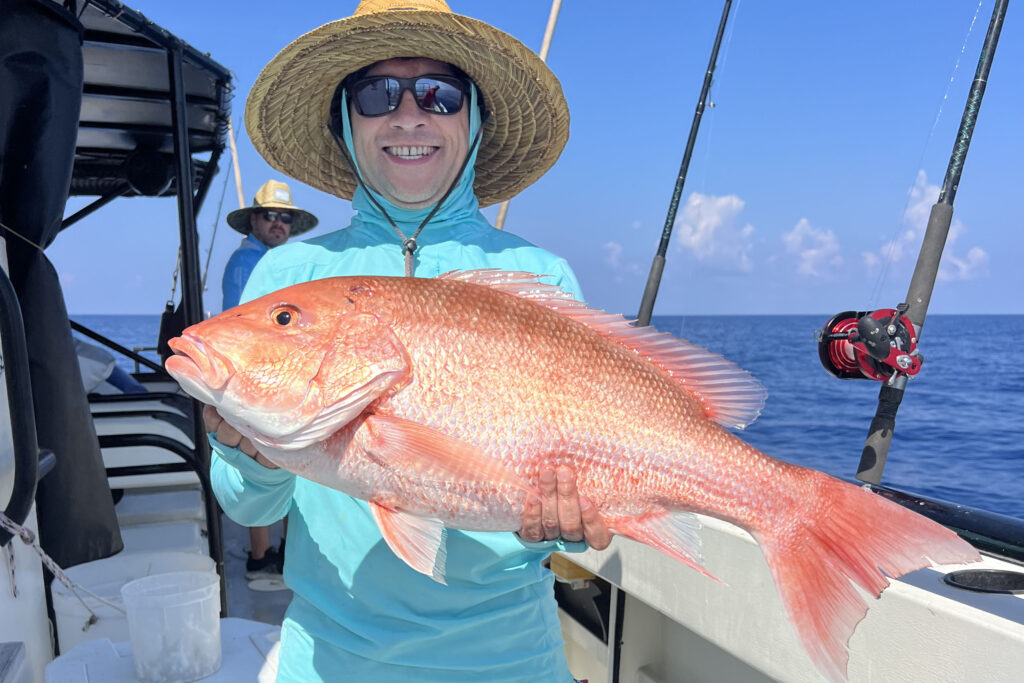
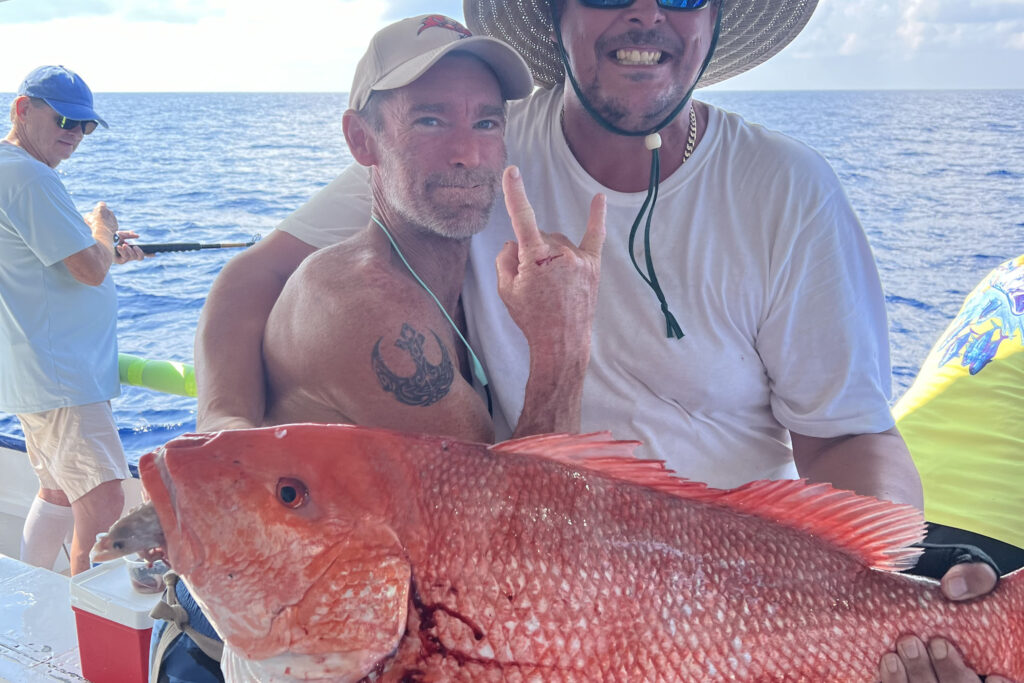
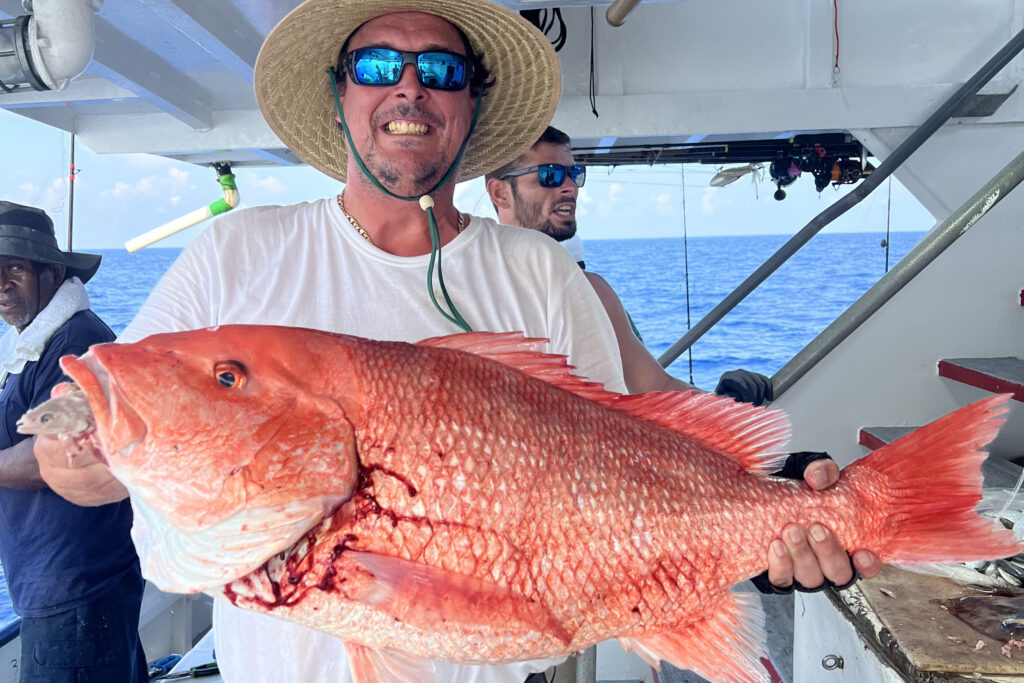
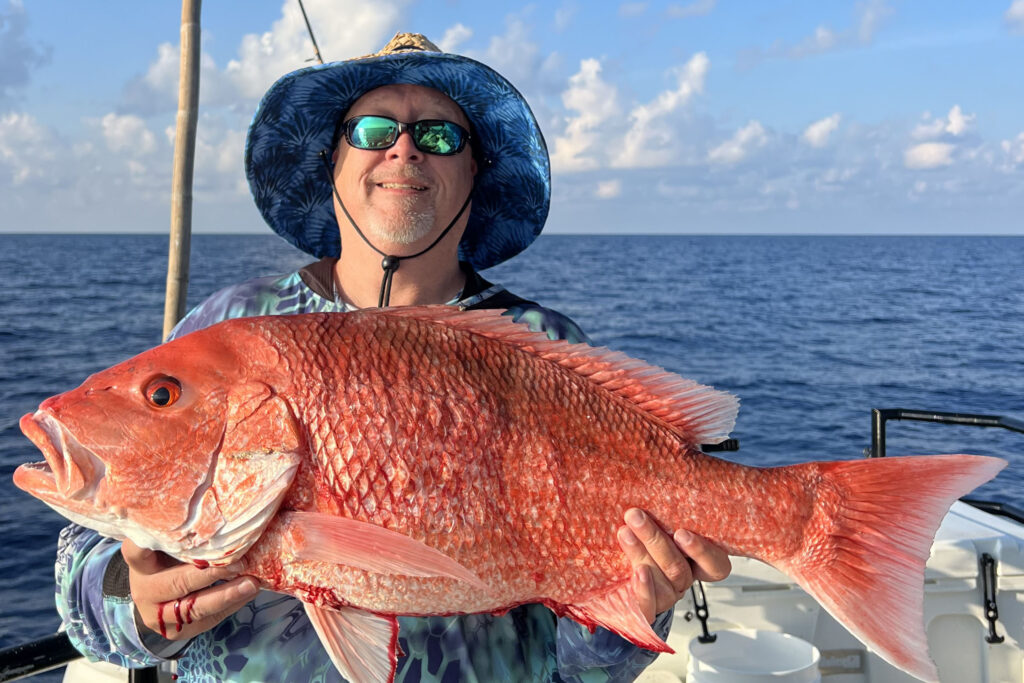
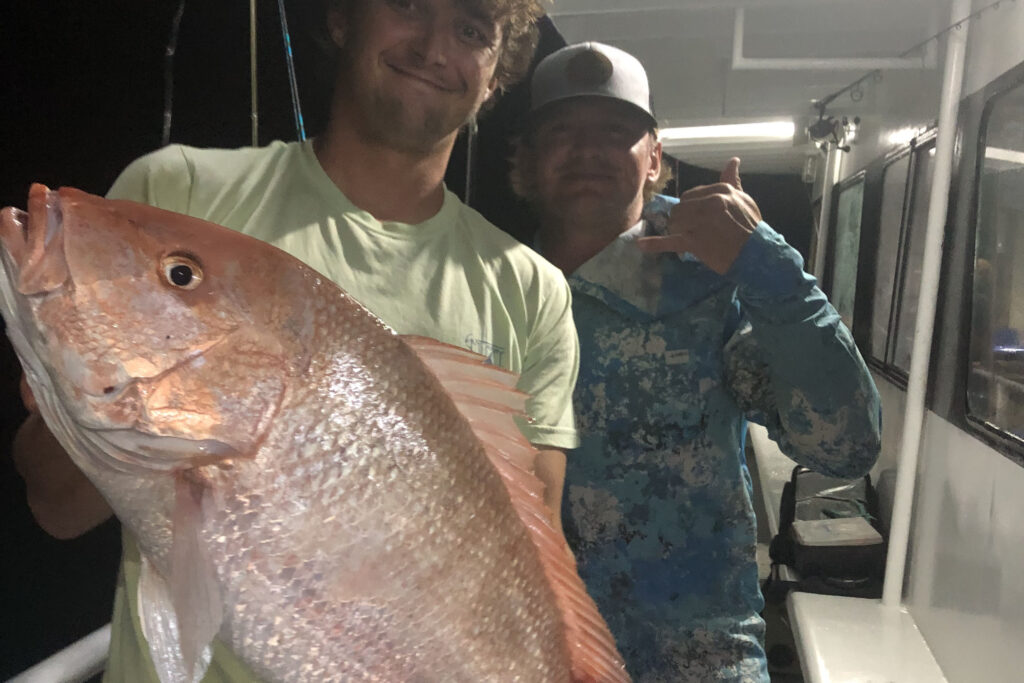
Red snapper season continues till end of day august 27th
We have lots more 12 hour xtreme trips with light loads on them
we have two more 39 hour trips after today, one with a super light load august 18th
We caught a bunch of big red snapper this past week on big live baits like the white grunts from the 5 hour half day trips prior to the 39 hour
we also are seeing the cut bonita strips working well too
The trick to big ones has been big baits and big tackle, allowing you to generally avoid the smaller ones
triggerfish are open now and were seeing some really nice ones lately.
We are seeing more of them on the cut squid chunks or cut bonita. However, they have smaller mouths so typically something around two inches long about a quarter inch wide and tall.
We get them sometimes on cut threadfins, but its more rare
mangrove snapper action is going well for sure offshore. We are seeing some nice ones on the cut threadfins, but the biggest are generally on the small to medium pinfish.
Vermillion snapper have been prolific and super aggressive. They are most commonly targeted with cut squid as they bite so fast and aggressively. However, we catch them on virtually anything they can fit in their smaller mouths much like the lane snapper near shore.
Pelagic wise we are seeing some consistent blackfin tuna lately. We have seen them trolling, slow pitch jigging and even while dropping or retrieving dead baits to and from the bottom. Occasionally some sailfish have been spotted and a handful caught and released. Mahi mahi are always a possibility this time of year like we discussed in the near shore report section.
Seasonal Openings:
- Red grouper: Open until the end of June
- Triggerfish: Open all year except June & July
- Amberjack: Open May, September & October
- Red snapper: Open June 1st – August 27th (close August 28th at 12:01am)
- Gags: Will open September 1st until September 15 (close September 16th at 12:01am)
- All other species: Open all year
Remember that when fishing in deeper nearshore and offshore federal waters, the Descend Act requires you to have a descending device or venting tool “rigged and ready.” If you know how to use a venting tool, keep it prepared. If not, here’s some helpful advice: https://bit.ly/3L5HTnv. Using a descending device is straightforward and doesn’t require as much precision or practice as venting. You can even get over $100 worth of descending device gear for free by taking a short course on barotrauma mitigation, which helps more fish survive. The course only takes about 10-15 minutes, and you can learn valuable techniques to protect our offshore fishery. Spread the word by visiting: https://returnemright.org/.
TERMS OF REFERENCE-
Inshore: This covers the areas from the inner bays, through the bridges, and right up to the beaches.
Near Shore: This includes the coastal waters from the beaches up to twenty miles offshore, or up to a depth of 100 feet.
Offshore: This extends from twenty miles offshore or from a depth of 100 feet and beyond.
For more fishing reports, photos, videos, and other content, check out Hubbard’s Marina on Facebook, Instagram, YouTube, TikTok, Twitter, Pinterest, or Snapchat by searching for @HubbardsMarina. Remember our family motto: “If you’re too busy to go fishing, you’re just too busy!” Thank you for reading our report.
Capt. Dylan Hubbard, Hubbard’s Marina
Phone or text: (727) 393-1947
Website: Hubbard’s Marina

Check out our new shirt! The Hubbard’s Marina mermaid tee. https://shop.hubbardsmarina.com/shop/Apparel/Shirts/p/Mermaid-T-Shirt-Purple-x84256618.htm

